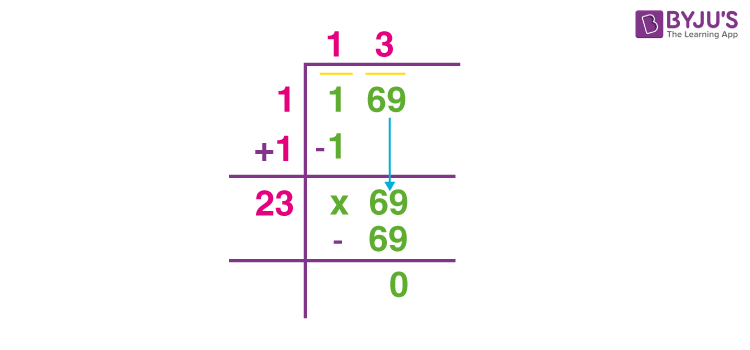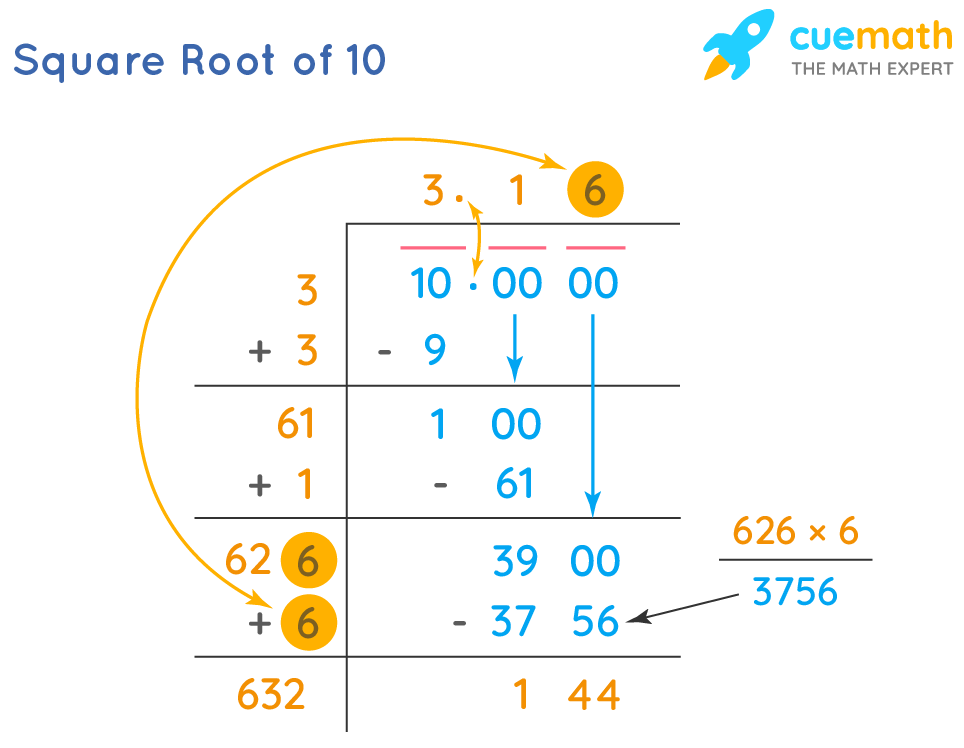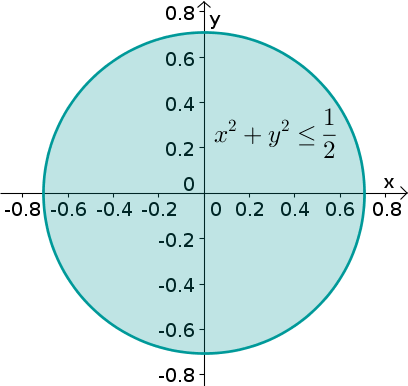Topic 169 square root: Discover everything you need to know about the square root of 169, including various methods to find it, its rational nature, and practical applications. This comprehensive guide ensures a clear and thorough understanding of this fundamental mathematical concept.
Table of Content
Square Root of 169
The square root of 169 is a commonly discussed topic in mathematics, particularly because 169 is a perfect square. This means that its square root is a whole number.
Understanding Square Roots
The square root of a number is a value that, when multiplied by itself, gives the original number. For 169, the square root is:
\(\sqrt{169} = 13\)
Methods to Find the Square Root of 169
Prime Factorization Method
In the prime factorization method, we express 169 as a product of prime numbers:
\[
169 = 13 \times 13 = 13^2
\]
Taking the square root of both sides, we get:
\[
\sqrt{169} = \sqrt{13^2} = 13
\]
Long Division Method
The long division method involves dividing 169 into pairs of digits starting from the right. Here is a brief outline:
- Divide 1 (the leftmost digit) by 1 to get 1.
- Bring down the next pair (69), giving 69.
- Double the quotient (1), giving 2, and find a number such that 2X * X is as close to 69 as possible without exceeding it. X is 3 in this case.
- The quotient becomes 13, and the process ends as the remainder is 0.
Repeated Subtraction Method
In the repeated subtraction method, we repeatedly subtract consecutive odd numbers from 169 until we reach 0. The number of subtractions gives the square root.
For 169:
- 169 - 1 = 168
- 168 - 3 = 165
- 165 - 5 = 160
- ... (continue subtracting odd numbers)
- 25 - 25 = 0
We subtract 13 times, hence the square root of 169 is 13.
Additional Information
The square root of 169 is rational because it is a whole number. It can be expressed in different forms:
- Radical form: \(\sqrt{169}\)
- Exponential form: \(169^{\frac{1}{2}}\)
The principal square root is positive, thus \(\sqrt{169} = 13\). However, both positive and negative roots exist, so \(\sqrt{169} = \pm 13\).
Example Problems
Example 1:
A square playground has an area of 676 square yards, divided into four equal sections. The area of each section is 169 square yards, thus the side length of each section is 13 yards.
Example 2:
A square blanket has an area of 256 square inches, with an embroidered interior of 169 square inches. The side of the interior is 13 inches, so the width of the embroidery is \(16 - 13 = 3\) inches.
Frequently Asked Questions
- What is the square root of 169? The square root of 169 is 13.
- Is 169 an irrational number? No, it is a rational number.
- Between which two numbers does the square root of 169 lie? Between 12 and 14.

READ MORE:
Introduction
The square root of 169 is a significant mathematical concept. This guide explores various methods to find the square root, including factoring, estimation, and long division. Understanding these methods provides a deeper insight into mathematical problem-solving. The square root of 169 is 13, as \(13 \times 13 = 169\). Let’s delve into the details and applications of this fundamental concept.
- Factoring Method: Breaking down 169 into its prime factors.
- Estimation Method: Approximating the square root through comparison.
- Long Division Method: A step-by-step approach to finding the precise square root.
- Repeated Subtraction: Understanding square roots through iterative subtraction.
Each method provides a unique perspective and understanding of how to find the square root of 169. This comprehensive guide ensures a clear and thorough exploration of these methods, helping readers grasp the concept effectively.
What is the Square Root of 169?
The square root of 169 is a number which, when multiplied by itself, results in 169. Mathematically, it is expressed as \(\sqrt{169}\).
To determine the square root of 169, consider the following steps:
- Recognize that 169 is a perfect square.
- Find the factors of 169. Since \(169 = 13 \times 13\), it is evident that 13 is the number which, when squared, gives 169.
- Thus, \(\sqrt{169} = 13\).
Therefore, the square root of 169 is 13, as shown by the equation \(13 \times 13 = 169\).
In summary, \(\sqrt{169} = 13\). This fundamental concept is crucial in various mathematical applications and problem-solving scenarios.
Is the Square Root of 169 Rational?
The square root of 169 is a rational number. A rational number is defined as a number that can be expressed as the quotient or fraction of two integers, where the denominator is not zero.
To understand why the square root of 169 is rational, consider the following:
- The square root of 169 is 13.
- 13 is an integer.
- Any integer can be expressed as a fraction where the denominator is 1 (e.g., \(\frac{13}{1}\)).
Therefore, since 13 can be expressed as \(\frac{13}{1}\), it is a rational number. Thus, the square root of 169 is rational.
This characteristic is important because it differentiates rational numbers from irrational numbers, which cannot be expressed as simple fractions. Understanding this distinction helps in various mathematical applications and problem-solving scenarios.
Examples
Here are some examples that illustrate the concept of the square root of 169 and its applications:
- Example 1: Solving the equation \(x^2 - 169 = 0\)
- Start with the equation: \(x^2 - 169 = 0\).
- Add 169 to both sides: \(x^2 = 169\).
- Take the square root of both sides: \(x = \pm \sqrt{169}\).
- Since \(\sqrt{169} = 13\), the solutions are \(x = 13\) and \(x = -13\).
- Example 2: Evaluating complex expressions involving 169
Consider the expression \(\sqrt{169} + \sqrt{81}\):
- Find the square root of 169: \(\sqrt{169} = 13\).
- Find the square root of 81: \(\sqrt{81} = 9\).
- Add the results: \(13 + 9 = 22\).
Thus, \(\sqrt{169} + \sqrt{81} = 22\).
- Example 3: Geometry problem involving 169
Find the side length of a square with an area of 169 square units:
- The area of a square is given by \(A = s^2\), where \(s\) is the side length.
- Set the equation \(s^2 = 169\).
- Take the square root of both sides: \(s = \sqrt{169}\).
- Since \(\sqrt{169} = 13\), the side length \(s\) is 13 units.
These examples show how the square root of 169 can be applied in solving equations, evaluating expressions, and solving geometry problems, demonstrating its versatility in various mathematical contexts.

Applications
The square root of 169 has numerous applications in various fields of mathematics and real-life scenarios. Here are some key applications:
- Geometry:
In geometry, knowing that \(\sqrt{169} = 13\) helps in determining the side length of squares and other geometric shapes when the area is given. For instance, if a square has an area of 169 square units, each side of the square will be 13 units.
- Algebra:
In algebra, the square root of 169 is often used to solve quadratic equations. For example, in the equation \(x^2 = 169\), solving for \(x\) involves finding the square root, leading to \(x = \pm 13\).
- Pythagorean Theorem:
The square root of 169 can be applied in the Pythagorean theorem for right-angled triangles. If one of the sides (legs) of a right triangle is 13 units and the other leg is known, the theorem can be used to find the hypotenuse or the missing leg.
- Physics:
In physics, the square root of 169 might be used in formulas involving areas or distances. For example, in calculating the distance an object travels under certain conditions, the square root of 169 could come into play if the distance squared equals 169.
- Engineering:
Engineers may use the square root of 169 in designing and analyzing structures, where understanding the square root helps in determining dimensions and other critical measurements.
Understanding the square root of 169 and its practical applications reinforces its importance in various mathematical problems and real-world scenarios, providing a strong foundation for more advanced concepts.
Related Topics
Understanding the square root of 169 opens up avenues to explore several related mathematical concepts. Here are some related topics that further enhance your knowledge:
- Square Root Tricks:
Learn various shortcuts and techniques to quickly find the square roots of numbers, especially perfect squares. These tricks can help simplify complex calculations.
- Square Root of Complex Numbers:
Explore how to find the square roots of complex numbers, which involves understanding imaginary numbers and their properties. For example, the square root of \(-1\) is denoted as \(i\).
- Square Root Properties:
Delve into the properties of square roots, such as the product and quotient rules: \(\sqrt{a \times b} = \sqrt{a} \times \sqrt{b}\) and \(\sqrt{\frac{a}{b}} = \frac{\sqrt{a}}{\sqrt{b}}\). These properties are useful in simplifying expressions.
- Other Square Root Calculations:
Investigate the square roots of other perfect squares, such as 144, 196, and beyond. Comparing these can provide a broader understanding of the relationships between numbers.
- Quadratic Equations:
Learn how square roots are used to solve quadratic equations of the form \(ax^2 + bx + c = 0\), which often require finding the square root as part of the solution process.
- Pythagorean Theorem:
Study the Pythagorean theorem in more detail, where the square root is used to determine the length of the hypotenuse in right-angled triangles: \(c = \sqrt{a^2 + b^2}\).
Exploring these related topics can deepen your understanding of square roots and their applications in various mathematical contexts, enhancing your overall mathematical skills and knowledge.
Tìm hiểu căn bậc hai của 169 qua video 'Square Root 169'. Hướng dẫn chi tiết và dễ hiểu giúp bạn nắm vững khái niệm toán học này.
Square Root 169 - Căn Bậc Hai Của 169
READ MORE:
Video này hướng dẫn cách đánh giá căn bậc hai của số 169.
Đánh Giá Căn Bậc Hai Của 169












